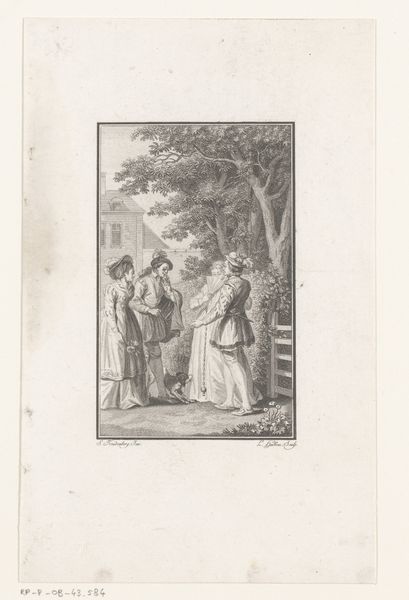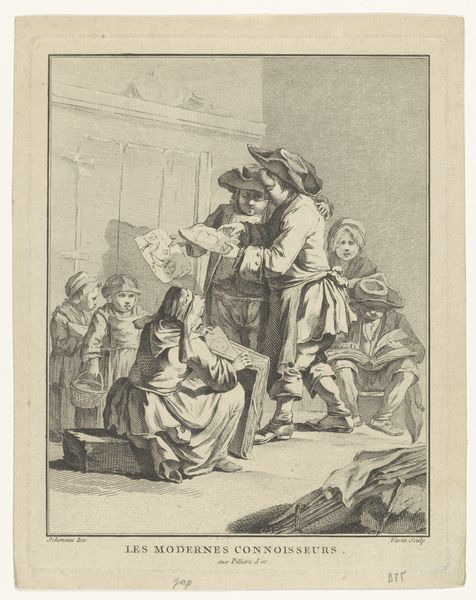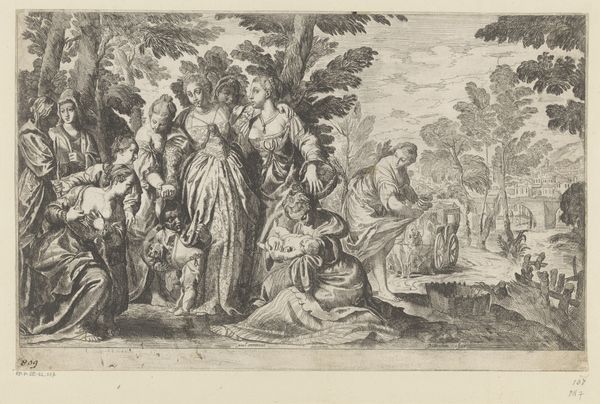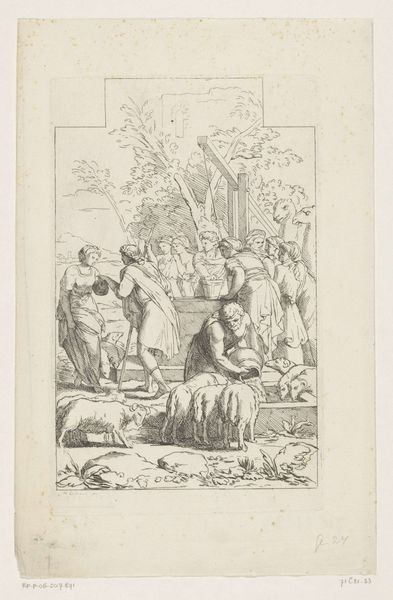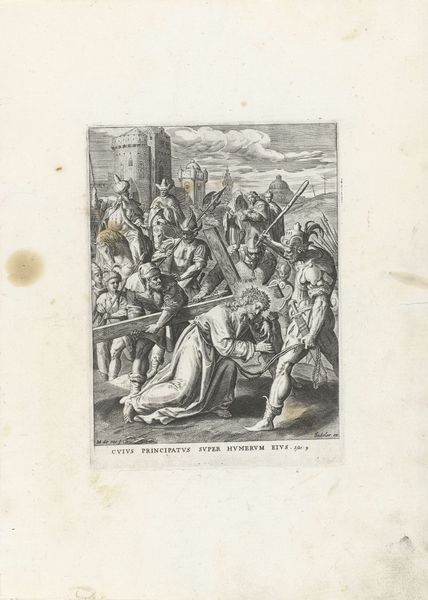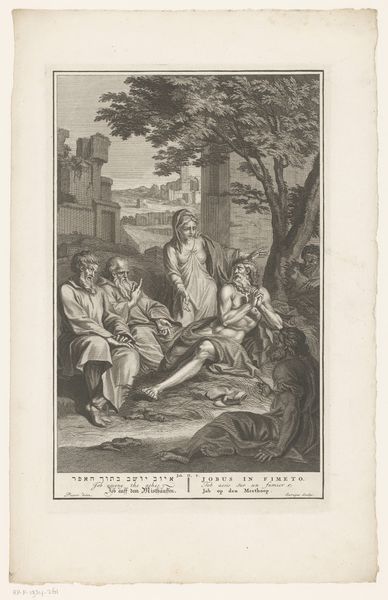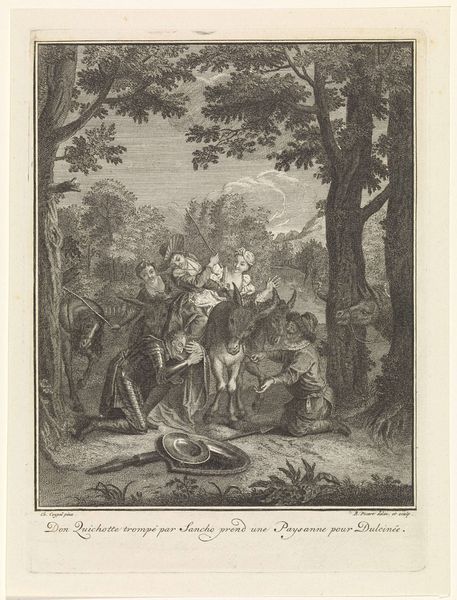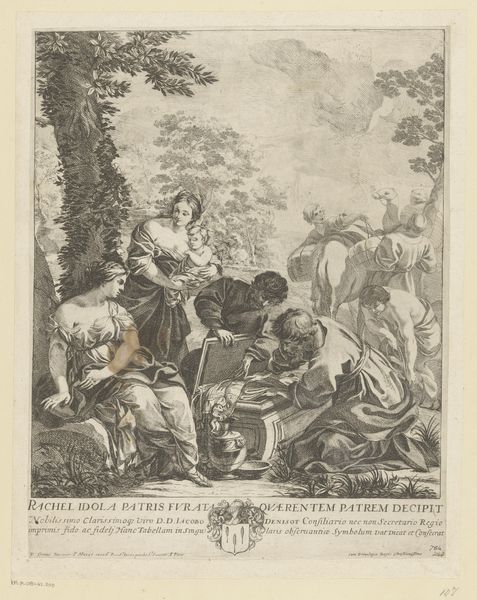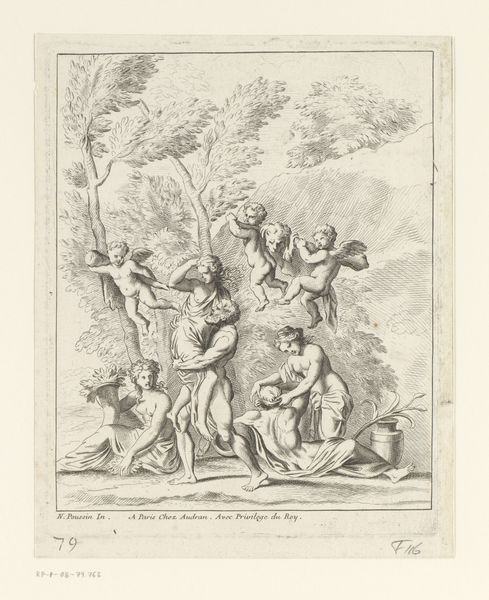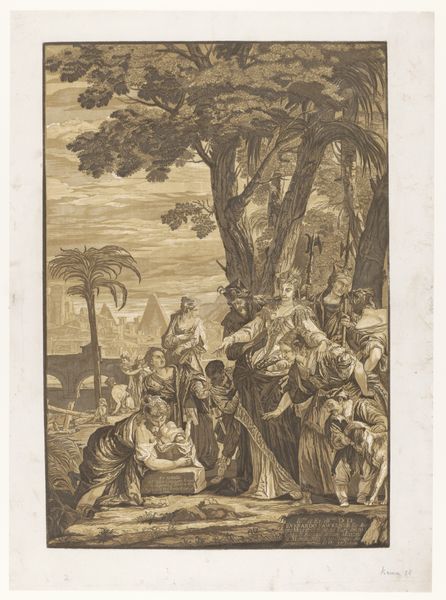
Dimensions: height 160 mm, width 105 mm
Copyright: Rijks Museum: Open Domain
Curator: Here we have Daniel Nikolaus Chodowiecki’s "Schipbreukelingen worden het dorp binnengebracht", made in 1784. It’s a print, utilizing etching and engraving techniques. Editor: My initial reaction is a feeling of both distress and warmth. The shipwrecked figures, clearly exhausted and distraught, are being embraced by a bustling village community. It feels very Romantic in its depiction of human emotion. Curator: Indeed, the piece fits neatly within Romanticism, prioritizing intense emotion over rationalism, common in the period. Look closely and consider the imagery; for instance, how the figures bearing oars suggest not just physical support, but a rescue facilitated by the village's close connection to the sea. This echoes Romanticism's broader fascination with folk traditions and maritime themes, where the sea acts as a theater of the sublime. Editor: Yes, I see that too. The composition really directs our eyes toward the exhausted figures, especially the woman slumped over. Her vulnerability is quite palpable. You’ve noted the maritime theme, but what about the visual hierarchy here? The villagers surrounding and supporting them seem to be offering them protection against further trauma. It gives me a hopeful feeling, a sense of community taking precedence. Curator: Absolutely. I believe the dog—depicted as active and playful—adds to this contrast, a symbol of the unbroken spirit of life in the face of tragedy. Consider also the background details of the smoking chimneys—suggesting productive normalcy which juxtaposes against immediate disruption, highlighting society’s capability to integrate and absorb shocking occurrences. Editor: It strikes me that, given this was made in 1784, prints such as these, given their circulation capabilities, served more than just aesthetic function. They functioned as moral examples; how communities respond to hardship is an issue central to society. I wonder if these images may have influenced disaster response? Curator: Fascinating notion, given Chodowiecki's focus on accessible art to a wider audience, his image would have surely resonated with a sense of ethical action. Visual representations like these create continuity—narratives which carry ethical weight through culture and time. Editor: So, this small print actually unfolds larger discussions—discussions on community action and trauma, visual empathy, and the role of art in influencing behavior. Quite powerful, indeed. Curator: Indeed. Its capacity to evoke a response that balances individual tragedy and communal resilience demonstrates visual art’s enduring impact.
Comments
No comments
Be the first to comment and join the conversation on the ultimate creative platform.
